Cardio? I thought you said car ride-o.
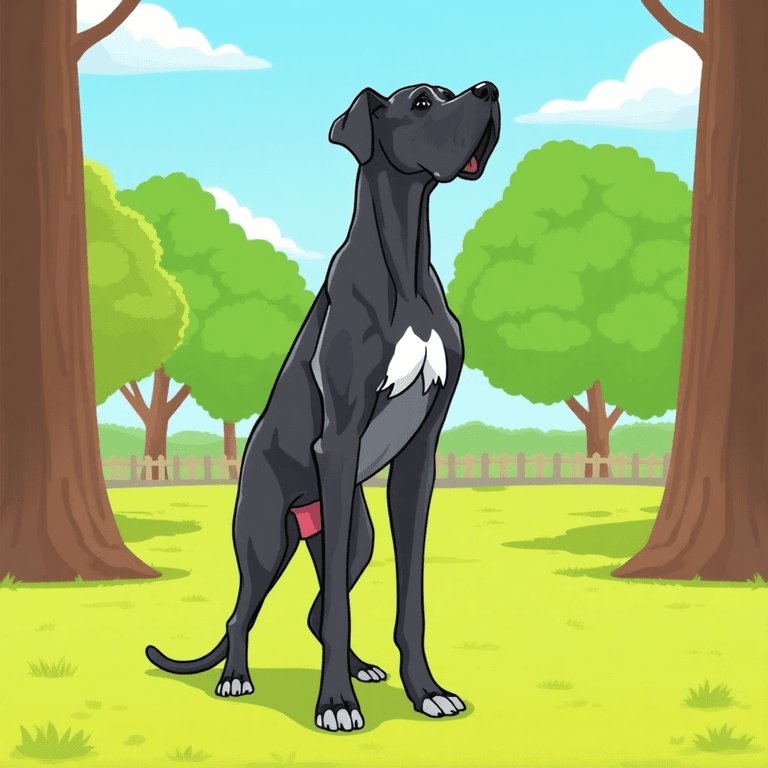
Great Danes & Fitness
We Great Danes need 30 to 60 minutes of exercise every single day. Trust me, if you skip my workout time, I might redecorate your living room with the contents of your trash can. It’s not personal – it’s just what happens when we get bored!
Exercise keeps our huge hearts pumping strong and our minds happy. Think of it like this: would you want to be stuck inside all day with legs this long? I didn’t think so!
Now, if you’ve got a Great Dane puppy, please don’t make them run marathons! Our little joints are still growing, so stick to short play sessions and leisurely walks. We’re like giant babies – we need time to grow into these massive paws.
The secret to keeping us healthy is mixing good food with the right amount of exercise. Our bones and joints are doing some serious work holding up all this awesome dog, so we need your help to stay strong.
When you give us the right activities and safe places to run around, we’ll be the happiest, most energetic gentle giants you’ve ever seen. There’s tons more cool stuff about keeping Great Danes fit and happy!
Exercise Requirements for Adult Great Danes
First things first – please teach us how to walk nicely on a leash. I know my enthusiasm can be overwhelming when I see a squirrel, and trust me, you don’t want 150 pounds of excited dog dragging you down the street! Leash training helps me learn manners and makes our walks way more fun for both of us.
Teaching me to walk nicely on a leash means more fun for both of us and fewer squirrel-chasing adventures!
Swimming is amazing for dogs like me. My joints get a little achy sometimes because, well, carrying around all this greatness isn’t always easy on the body. When I’m paddling around in the water, I feel like I’m floating on air!
Plus, I can burn off energy without my humans worrying about me overdoing it. We need about 30 to 60 minutes of exercise every day. I know that might sound like a lot, but think of it as quality time together! Regular exercise helps improve cardiovascular health, keeping our hearts strong and healthy.
Some days we can take long walks around the neighborhood (where I’ll try to say hello to every person we meet), and other days we can hit the lake for a swim.
The best part? All this exercise keeps me from getting into trouble at home. A tired Great Dane is a good Great Dane!
Guidelines for Exercising Great Dane Puppies
So here’s the deal: us Great Dane puppies are basically like those fancy sports cars that look amazing but need special care. We can’t just go running marathons right out of the gate (even though we totally want to chase every squirrel we see).
What we really need are short bursts of fun – like 5 to 10 minutes of playtime throughout the day. Think of it like snack time, but for our muscles! These mini workout sessions help us grow into the magnificent giants we’re meant to be without wearing out our puppy bodies.
And here’s a pro tip from someone with four paws: throw in some training while we play! Teaching us to sit, stay, or give you our adorable puppy eyes not only works our brains but also makes us feel like the good dogs we are. Plus, it makes you humans super happy, which makes us happy too.
Now, I’ve to be serious for a hot second – please don’t make us do crazy jumping or long runs. Our joints are still figuring things out, and we don’t want to mess that up. It’s also important to remember that regular exercise is essential for our overall health and happiness.
Instead, let’s stick to fun games, gentle walks, and maybe some tug-of-war with our favorite toys. We promise to be the best exercise buddies ever if you keep it fun and easy!
Importance of Bone and Joint Health
You see, being this tall and magnificent comes with some responsibilities. I’m like a furry skyscraper, and just like any good building, I need a strong foundation! My bones are working overtime to hold up all this greatness, so I need the right fuel to keep them happy.
My humans make sure I get plenty of calcium and phosphorus in my food – think of it like vitamins for my skeleton! Without these nutrients, my bones would be about as sturdy as a house made of tennis balls.
And trust me, nobody wants a wobbly Great Dane stumbling around the living room!
As I get older (though I’m still a puppy at heart), my joints start feeling like creaky door hinges. That’s where those magical joint supplements come in! They’re like WD-40 for my knees and hips. My humans need to be aware of hip dysplasia prevalence since it can affect my mobility as I age.
When I’m chasing squirrels or doing my famous “Great Dane zoomies” around the yard, these supplements help keep everything running smoothly.
The best part? When my bones and joints are happy, I’m delighted! I can play longer, jump higher (well, as high as a dignified Great Dane should), and give even better hugs to my favorite humans.
Taking care of my skeleton isn’t just smart – it’s essential for living my best giant dog life!
Benefits of Regular Exercise Beyond Physical Health
Taking care of our bones and joints sets the stage for something even bigger: the benefits of regular exercise.
Hey, it’s not just about keeping this massive body of mine in shape! Regular activity makes life so much better for both of us.
Here are some awesome things that happen when we get moving:
- Better moods for my humans, thanks to those happy brain chemicals called endorphins
- More chances to show off my impressive size to other dogs and their humans at the park
- My family gets tougher at handling life’s problems and stress
- We become an even better team, which means more belly rubs and treats for me
- Engaging in daily exercise helps prevent destructive behaviors and improves sleep patterns for both me and my humans.
Environmental Considerations for Great Dane Exercise
Woof! Listen up, fellow four-legged friends and the humans who love us, Great Danes. I need to bark about something super important – where we get our exercise and playtime!
Us Great Danes are pretty awesome, but we’re also pretty big. That means we need our humans to think smart about where they take us for walkies and zoomies. Trust me, I’ve learned this the hard way after a few not-so-great adventures!
Let me share my tail-wagging wisdom about the best spots to stretch our long legs:
| Weather | Best Ground for My Paws | What to Watch Out For |
|---|---|---|
| Sunny | Soft grass | I might overheat and pant like crazy |
| Rainy | Dirt paths | Slippery spots that make me slip and slide |
| Cold | Sandy areas | My paws might get too chilly |
| Windy | Cushy turf | All those smells and sounds distract me |
| Humid | Hot pavement | I’ll get way too hot and tired |
See, us Great Danes are like gentle giants. We love running around, but our big bodies mean we need extra care. Hot pavement can burn my paw pads (ouch!), and when it’s super hot outside, I pant so much I sound like a broken air conditioner.
My human learned that grass is usually my best friend for exercise. It’s soft on my joints and keeps my paws cool. But when it’s raining, dirt trails work great too – just watch out for those sneaky puddles that make me do the splits!
The most important thing? My human always brings water for me and watches to make sure I’m not getting too tired. Because even though I’m tough, I’m also a big softie who just wants to have fun safely! Additionally, my human understands that early exposure to various environments helps keep me confident and responsive during our exciting outdoor adventures.
Final Thoughts
Woof! Let me tell you something essential about us, Great Danes, and staying fit. We’re gentle giants who need our daily workout time – and trust me, we’re not shy about letting you know when it’s exercise o’clock!
Here’s the scoop: we need at least 30 minutes of good, heart-pumping exercise every single day. I know, I know – that might sound like a lot when you’re looking at my massive paws, but think of it this way: would you rather have a bored Great Dane bouncing off your walls, or a happy, tired one snoring peacefully on your couch?
Getting our daily dose of running, walking, or playing fetch does amazing things for our giant bodies. It keeps our bones strong (and believe me, we’ve got A LOT of bones to stay healthy), our joints moving smoothly, and our brains sharp. Plus, there’s nothing better than a good game of chase to put a smile on our droopy faces!
When my humans stick to our exercise routine, I feel like a million bucks. I’m happier, calmer, and way less likely to accidentally knock over your favorite lamp with my enthusiastic tail wagging. So really, regular exercise is a win-win for both of us!
References
- https://www.pdsa.org.uk/pet-help-and-advice/looking-after-your-pet/puppies-dogs/large-dogs/great-dane
- http://www.greatdanerescue.com.au/Docs/exercise_guide.pdf
- https://saveadane.org/wp-content/uploads/2009/06/your-great-dane-and-you.pdf
- https://www.borrowmydoggy.com/doggypedia/dog-breed-guides-great-dane
- https://www.lovemargot.co/great-dane-blog?p=do-great-danes-need-a-lot-of-exercise
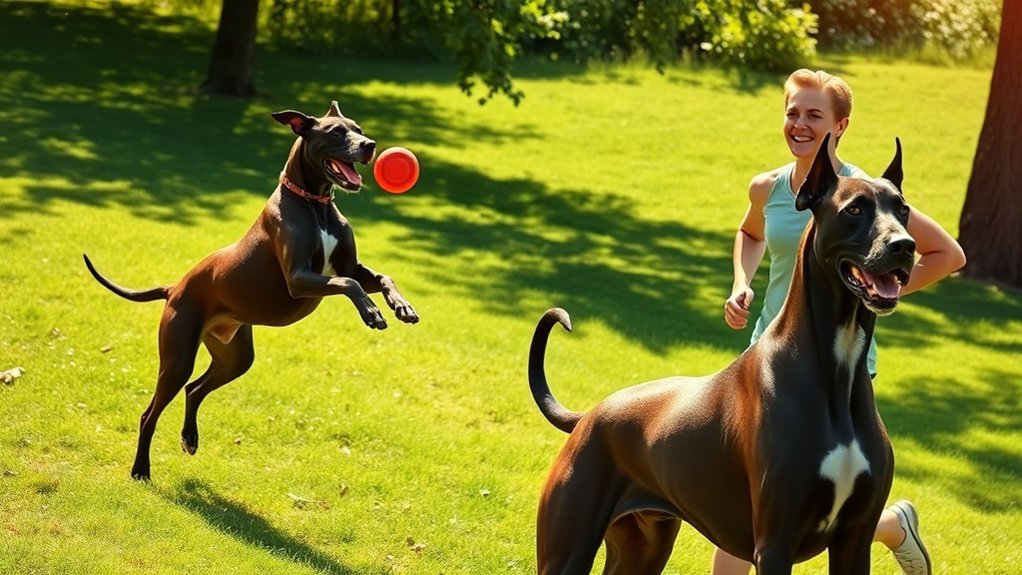
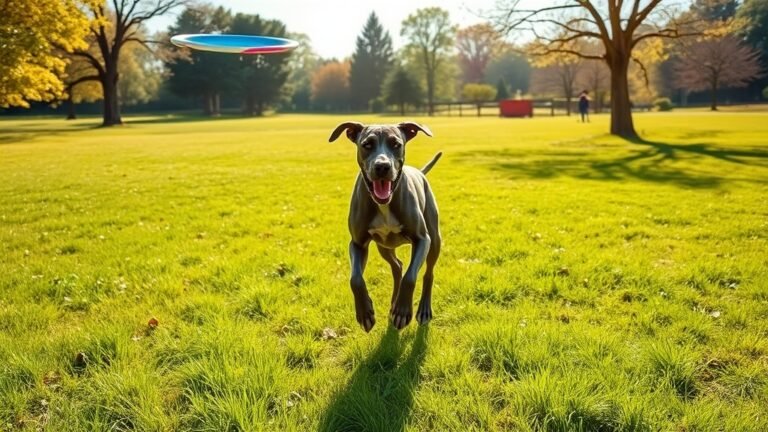
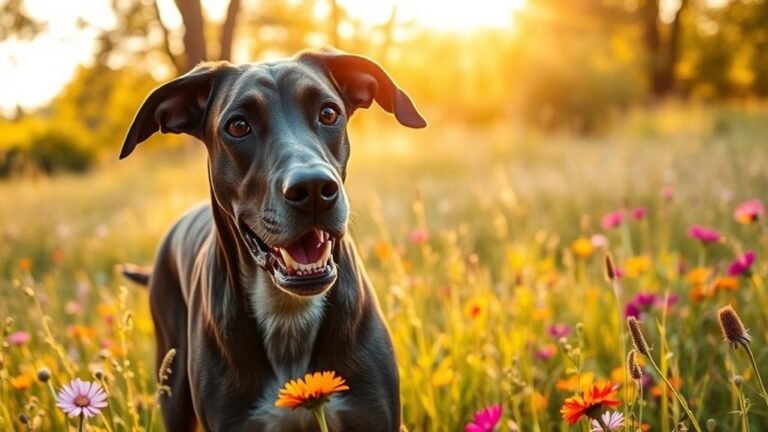
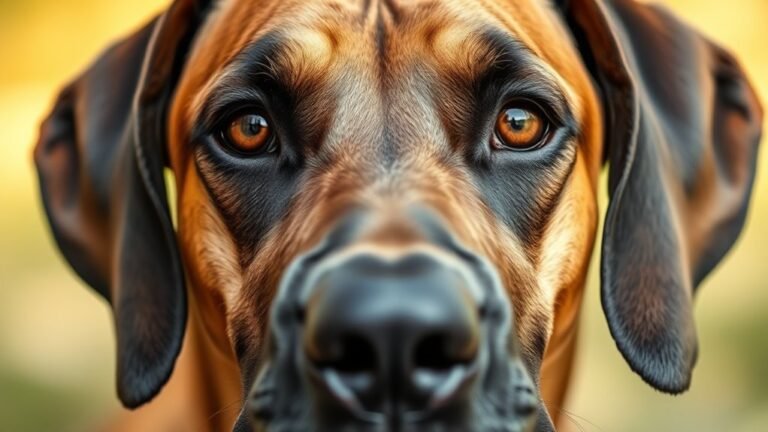
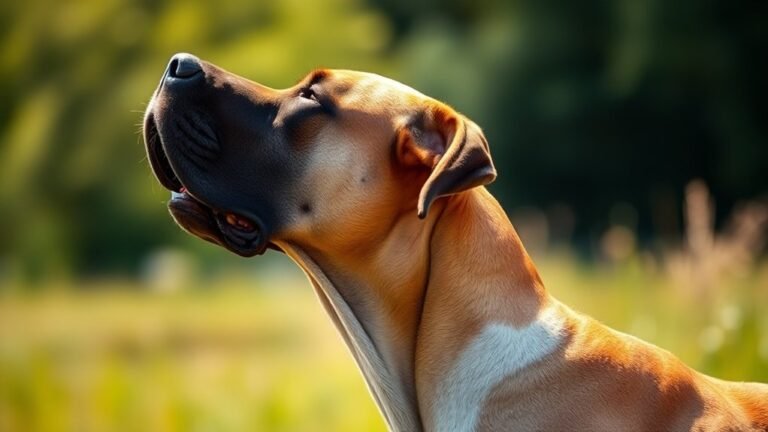
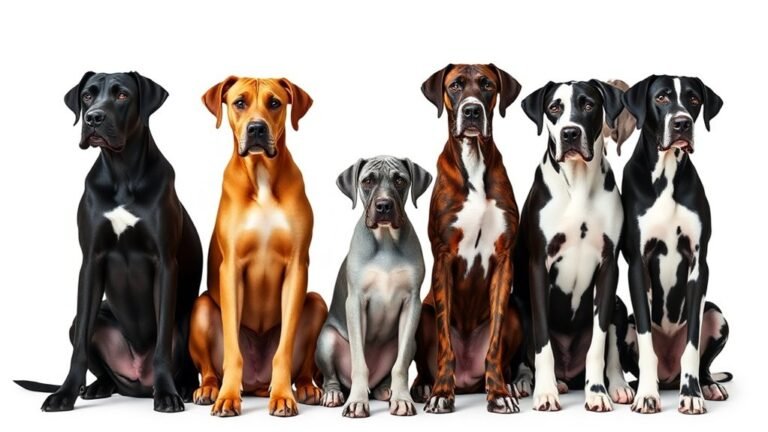
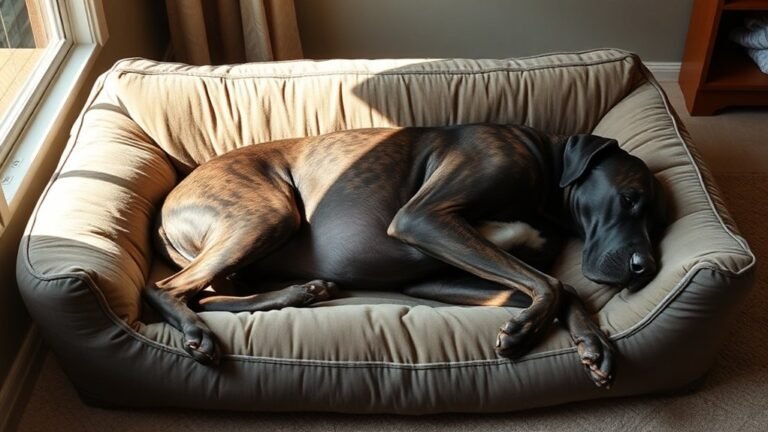
19 Comments